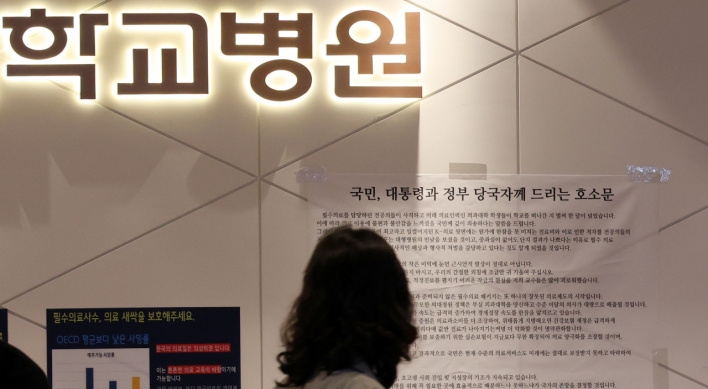[Qasim Moini] Transnational terrorism and the IS brand
Islamic State unleashes terror in regions beyond the Middle Eastern sphere.
By KH디지털2Published : Aug. 15, 2016 - 15:15
Many of the militias that were formed in Pakistan during this period, which drew recruits from Afghanistan itself as well as from Pakistan and across the Muslim world, spawned ‘jihadi’ successors after the Afghan campaign itself was over. Some of these were anti-India and Kashmir-centric, while others were virulently sectarian, taking aim at Pakistan’s sizeable Shia Muslim minority. The vast majority of the groups adhered to the Salafi/Wahhabi or Deobandi creeds.
others were virulently sectarian, taking aim at Pakistan’s sizeable Shia Muslim minority. The vast majority of the groups adhered to the Salafi/Wahhabi or Deobandi creeds.
During the 1990s and beyond, these militant groups proliferated as the state chose not to act, indulging in horrific acts of violence. Post-September 11 the Pakistani establishment did act, shutting down some (but not all) militant groups. In the aftermath of 2007’s Lal Masjid (Red Mosque) operation in the heart of Islamabad, the country witnessed an explosion of militant Islamist violence. This violence was only significantly controlled when the military went into the north-western tribal regions in June 2014 to flush out the militants based there.
The reason for giving this lengthy background is to explain that now, with the rise of IS - a militant group that has grand territorial ambitions - there are many willing recruits for the IS cause in Pakistan, thanks to over three decades of active militancy.
Unfortunately, many in the top tiers of government have dismissed the possibility that IS may be making inroads in Pakistan through these militant actors. For example, Pakistan’s federal Interior Minister Nisar Ali Khan has said IS has no presence in the country. Yet there are frequent news reports stating that militants have been arrested from various Pakistani cities whom police claim are linked to IS/Daesh.
In fact in the aftermath of the recent Kabul Hazara bombing, a top US general stated that most IS fighters in Afghanistan were formerly associated with the Tehreek-i-Taliban Pakistan militant group before switching sides. Some Afghan Taliban fighters were also reportedly aligning with IS.
The Pakistani interior minister has said other ‘terrorist groups’ use the Daesh name.
This, it seems, is merely a matter of semantics, as the local militants are self-identifying as IS fighters. Then why should the government insist on denials? Yet despite the wavering at the top, some officials are willing to call a spade a spade. For example the head of Pakistan’s Intelligence Bureau, a top civilian intelligence agency, has said on record that IS is an emerging threat in Pakistan; he named Lashkar-i-Jhangvi and Sipah-i-Sahaba Pakistan, two anti-Shia sectarian militant groups, as likely to be allied with IS.
The Pakistani example - home-grown militants and extremists pledging allegiance to the IS cause - can be applied to other Asian states as well.
Like Pakistan, the Bangladesh government had also initially denied the presence of IS in the country, despite several claims made by the outfit. In fact it has blamed mainstream opposition parties like the Jamaat-i-Islami and Bangladesh Nationalist Party for the violence. But as some observers noted, those involved in the violence in Bangladesh and claiming to fight for IS were linked to the Jamaat-ul-Mujahideen Bangladesh, a long-active militant group.
According to the UN over 30 groups worldwide have pledged allegiance to IS. Southeast Asia (SEA) is amongst the regions on the militant group’s radar, and in this region too established militant networks are being used to further the IS cause, as the report "Radicalisation in Southeast Asia", focusing on Indonesia, Malaysia and the Philippines, published by the Malaysian government and supported by the EU and UNODC, points out in great detail.
In fact fighters from SEA have been active in the Middle East, and many have returned home. Moreover, in May 2015 the Singapore prime minister had said SEA had turned into a key “recruitment centre” for IS; experts said Mindanao in the Philippines was particularly vulnerable where the establishment of a possible province of IS was concerned.
Groups such as Ansar al-Shariah, Abu Sayyaf, Jamaa Islamiyah and others that have long been active in the region have been linked to IS. The Syrian conflict has played a key role in raising IS’ profile in Indonesia and Malaysia. Groups and individuals attracted to IS’ Takfiri and sectarian creed form the base of Asian support for Daesh. Actual transfer of funds has been reported from Raqqa and Australia to Indonesia.
Over 100 Indonesian fighters have been reported to be in Syria and Iraq as per official figures; unofficial figures say the number may be as high as 800. Also, in 2014, Katiba Nusantara, the Daesh ‘unit’ fighting in the Middle East and consisting of Malay-speaking militants, was formed.
In the Philippines the official position is also that IS has no real presence in the country, even though members of Abu Sayyaf have pledged allegiance and there has been IS recruitment in Mindanao. Some officials have made a difference between ‘Daesh-directed’and ‘Daesh-inspired’; again, this difference may be purely academic.
 The fact is that denying the presence of IS in their countries will not help governments deal with the problem. While it is true that fighters may not be hopping on planes out of Syria and Iraq to form cells or ‘provinces’ abroad - though the return home of fighters from these countries is a problem - all militants need is a good internet connection and enough propaganda material to ‘inspire’ would-be jihadis sitting in far-off lands. Hence, perhaps Asian governments need to take a long, hard look within at the militant and extremist movements that already exist to stem further acts of terrorist violence.
The fact is that denying the presence of IS in their countries will not help governments deal with the problem. While it is true that fighters may not be hopping on planes out of Syria and Iraq to form cells or ‘provinces’ abroad - though the return home of fighters from these countries is a problem - all militants need is a good internet connection and enough propaganda material to ‘inspire’ would-be jihadis sitting in far-off lands. Hence, perhaps Asian governments need to take a long, hard look within at the militant and extremist movements that already exist to stem further acts of terrorist violence.
By Qasim A. Moini
Qasim A. Moini is a senior editor at Dawn and a scholar of religious militancy. --Ed.
(Dawn/Asia News Network)
 others were virulently sectarian, taking aim at Pakistan’s sizeable Shia Muslim minority. The vast majority of the groups adhered to the Salafi/Wahhabi or Deobandi creeds.
others were virulently sectarian, taking aim at Pakistan’s sizeable Shia Muslim minority. The vast majority of the groups adhered to the Salafi/Wahhabi or Deobandi creeds.During the 1990s and beyond, these militant groups proliferated as the state chose not to act, indulging in horrific acts of violence. Post-September 11 the Pakistani establishment did act, shutting down some (but not all) militant groups. In the aftermath of 2007’s Lal Masjid (Red Mosque) operation in the heart of Islamabad, the country witnessed an explosion of militant Islamist violence. This violence was only significantly controlled when the military went into the north-western tribal regions in June 2014 to flush out the militants based there.
The reason for giving this lengthy background is to explain that now, with the rise of IS - a militant group that has grand territorial ambitions - there are many willing recruits for the IS cause in Pakistan, thanks to over three decades of active militancy.
Unfortunately, many in the top tiers of government have dismissed the possibility that IS may be making inroads in Pakistan through these militant actors. For example, Pakistan’s federal Interior Minister Nisar Ali Khan has said IS has no presence in the country. Yet there are frequent news reports stating that militants have been arrested from various Pakistani cities whom police claim are linked to IS/Daesh.
In fact in the aftermath of the recent Kabul Hazara bombing, a top US general stated that most IS fighters in Afghanistan were formerly associated with the Tehreek-i-Taliban Pakistan militant group before switching sides. Some Afghan Taliban fighters were also reportedly aligning with IS.
The Pakistani interior minister has said other ‘terrorist groups’ use the Daesh name.
This, it seems, is merely a matter of semantics, as the local militants are self-identifying as IS fighters. Then why should the government insist on denials? Yet despite the wavering at the top, some officials are willing to call a spade a spade. For example the head of Pakistan’s Intelligence Bureau, a top civilian intelligence agency, has said on record that IS is an emerging threat in Pakistan; he named Lashkar-i-Jhangvi and Sipah-i-Sahaba Pakistan, two anti-Shia sectarian militant groups, as likely to be allied with IS.
The Pakistani example - home-grown militants and extremists pledging allegiance to the IS cause - can be applied to other Asian states as well.
Like Pakistan, the Bangladesh government had also initially denied the presence of IS in the country, despite several claims made by the outfit. In fact it has blamed mainstream opposition parties like the Jamaat-i-Islami and Bangladesh Nationalist Party for the violence. But as some observers noted, those involved in the violence in Bangladesh and claiming to fight for IS were linked to the Jamaat-ul-Mujahideen Bangladesh, a long-active militant group.
According to the UN over 30 groups worldwide have pledged allegiance to IS. Southeast Asia (SEA) is amongst the regions on the militant group’s radar, and in this region too established militant networks are being used to further the IS cause, as the report "Radicalisation in Southeast Asia", focusing on Indonesia, Malaysia and the Philippines, published by the Malaysian government and supported by the EU and UNODC, points out in great detail.
In fact fighters from SEA have been active in the Middle East, and many have returned home. Moreover, in May 2015 the Singapore prime minister had said SEA had turned into a key “recruitment centre” for IS; experts said Mindanao in the Philippines was particularly vulnerable where the establishment of a possible province of IS was concerned.
Groups such as Ansar al-Shariah, Abu Sayyaf, Jamaa Islamiyah and others that have long been active in the region have been linked to IS. The Syrian conflict has played a key role in raising IS’ profile in Indonesia and Malaysia. Groups and individuals attracted to IS’ Takfiri and sectarian creed form the base of Asian support for Daesh. Actual transfer of funds has been reported from Raqqa and Australia to Indonesia.
Over 100 Indonesian fighters have been reported to be in Syria and Iraq as per official figures; unofficial figures say the number may be as high as 800. Also, in 2014, Katiba Nusantara, the Daesh ‘unit’ fighting in the Middle East and consisting of Malay-speaking militants, was formed.
In the Philippines the official position is also that IS has no real presence in the country, even though members of Abu Sayyaf have pledged allegiance and there has been IS recruitment in Mindanao. Some officials have made a difference between ‘Daesh-directed’and ‘Daesh-inspired’; again, this difference may be purely academic.
 The fact is that denying the presence of IS in their countries will not help governments deal with the problem. While it is true that fighters may not be hopping on planes out of Syria and Iraq to form cells or ‘provinces’ abroad - though the return home of fighters from these countries is a problem - all militants need is a good internet connection and enough propaganda material to ‘inspire’ would-be jihadis sitting in far-off lands. Hence, perhaps Asian governments need to take a long, hard look within at the militant and extremist movements that already exist to stem further acts of terrorist violence.
The fact is that denying the presence of IS in their countries will not help governments deal with the problem. While it is true that fighters may not be hopping on planes out of Syria and Iraq to form cells or ‘provinces’ abroad - though the return home of fighters from these countries is a problem - all militants need is a good internet connection and enough propaganda material to ‘inspire’ would-be jihadis sitting in far-off lands. Hence, perhaps Asian governments need to take a long, hard look within at the militant and extremist movements that already exist to stem further acts of terrorist violence.By Qasim A. Moini
Qasim A. Moini is a senior editor at Dawn and a scholar of religious militancy. --Ed.
(Dawn/Asia News Network)




![[Herald Interview] 'Amid aging population, Korea to invite more young professionals from overseas'](http://res.heraldm.com/phpwas/restmb_idxmake.php?idx=644&simg=/content/image/2024/04/24/20240424050844_0.jpg&u=20240424200058)














